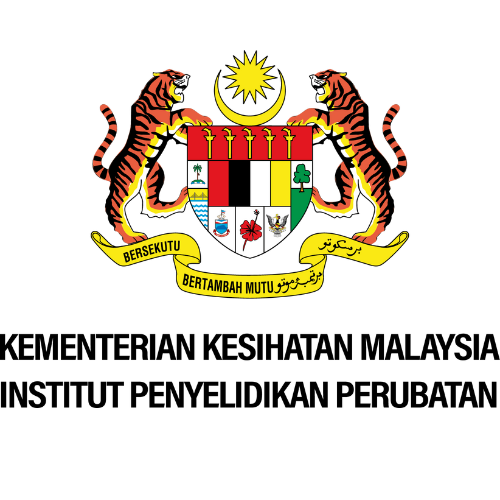Plant Part Used
Leaf/whole plant.
Introduction
Gotu kola is a tropical plant native to India and Indonesia. Gotu kola does not contain any caffeine and is not related to kola nut. Traditionally gotu kola is used to enhance wound healing, increase energy, and sexual potency. It is reported to have a positive effect on tissues, improving soft tissue inflammation, infection, and venous insufficiency.
Dosage Info
Dosage Range
100-200mg (standardized extract) daily.
Most Common Dosage
50mg (standardized extract), 2 times a day.
Standardization
[span class=doc]Standardization represents the complete body of information and controls that serve to enhance the batch to batch consistency of a botanical product, including but not limited to the presence of a marker compound at a defined level or within a defined range.[/span]
The most current available medical and scientific literature indicates that this dietary supplement should be standardized to 10-30% asiaticosides and/or 2-8% triterpenes per dose.
Reported Uses
Because gotu kola supports connective tissue health it has important applications in the treatment of such skin-related disorders as scleroderma and cellulitis. (1) These benefits are also useful in the treatment of the factors that cause vericose veins and phlebitis. (2) Problems associated with circulation in the veins and capillaries may improve with the use of gotu kola. (3) , (4) , (5) , (6)
Gotu kola is also believed to support faster healing of skin sores, wounds, and cuts by stimulating the production of keratin in the skin. This aids in thickening the skin in areas of infection or damage. (7) This activity may also benefit stretch marks related to pregnancy (8) and may also be beneficial in decreasing the scarring seen during wound healing. (9)
Gotu kola has also been evaluated for its sedative properties (10) , (11) and may benefit patients with the herpes simplex virus (12) or a gastric ulcer. (13)
Toxicities & Precautions
Introduction
[span class=alert]Be sure to tell your pharmacist, doctor, or other health care providers about any dietary supplements you are taking. There may be a potential for interactions or side effects.[/span]
General
This dietary supplement is considered safe when used in accordance with proper dosing guidelines.
Side Effects
Side effects are possible with any dietary supplement. In rare cases, this dietary supplement may cause dermatitis when applied topically. (14) Tell your doctor if these side effects become severe or do not go away.
Pregnancy/ Breast Feeding
This dietary supplement should not be used in pregnant women.
This dietary supplement should not be used if you are breast-feeding an infant without first consulting a physician.
Age Limitations
To date, the medical literature has not reported any adverse effects specifically related to the use of this dietary supplement in children. Since young children may have undiagnosed allergies or medical conditions, this dietary supplement should not be used in children under 10 years of age unless recommended by a physician.
Read More
2) Cultivation
3) Safety
References
- View Abstract: Tenni R, et al. Effect of the Triterpenoid Fraction of Centella asiatica on Macromolecules of the Connective Matrix in Human Skin Fibroblast Cultures. Ital J Biochem. 1988;37(2):69-77.
- Allegra C. Comparative Capillaroscopic Study of Certain Bioflavonoids and Total Triterpenic Fractions of Centella asiatica in Venous Insufficiency. Clin Ter. 1981;99:507-13.
- View Abstract: Cesarone MR, Laurora G, De Sanctis MT, et al. Activity of Centella asiatica in Venous Insufficiency. Minerva Cardioangiol. Apr1992;40(4):137-43.
- View Abstract: Cesarone MR, Laurora G, De Sanctis MT, et al. The Microcirculatory Activity of Centella asiatica in Venous Insufficiency. A Double-blind Study. Minerva Cardioangiol. Jun1994;42(6):299-304.
- View Abstract: Belcaro GV, Grimaldi R, Guidi G. Improvement of Capillary Permeability in Patients with Venous Hypertension after Treatment with TTFCA. Angiology. Jul1990;41(7):533-40.
- View Abstract: De Sanctis MT, Incandela L, Cesarone MR, et al. Acute Effects of TTFCA on Capillary Filtration in Severe Venous Hypertension. Panminerva Med. Jun1994;36(2):87-90.
- View Abstract: Poizot A, et al. Modification of the Kinetics of Healing after Iterative Exeresis in the Rat. Action of a Triterpenoid and Its Derivatives on the Duration of Healing. C R Acad Sci Hebd Seances Acad Sci D. 1978;286(10):789-92.
- View Abstract: Young GL, Jewell D. Creams for Preventing Stretch Marks in Pregnancy. Cochrane Database Syst Rev. 2000;(2):CD000066.
- View Abstract: Widgerow AD, Chait LA, Stals R, et al. New Innovations in Scar Management. Aesthetic Plast Surg. May2000;24(3):227-34.
- Ramaswamy AS, et al. Pharmacological Studies on Centella asiatica. Linn. J Res Indian Med. 1970;4:160-75.
- View Abstract: Bradwejn J, Zhou Y, Koszycki D, et al. A Double-blind, Placebo-controlled Study on the Effects of Gotu Kola (Centella asiatica) on Acoustic Startle Response in Healthy Subjects. J Clin Psychopharmacol. Dec2000;20(6):680-4.
- View Abstract: Yoosook C, Bunyapraphatsara N, Boonyakiat Y, et al. Anti-herpes Simplex Virus Activities of Crude Water Extracts of Thai Medicinal Plants. Phytomedicine. Jan2000;6(6):411-9.
- View Abstract: Cheng CL, Koo MW. Effects of Centella asiatica on Ethanol Induced Gastric Mucosal Lesions in Rats.Life Sci. Oct2000;67(21):2647-53.
- Danese P, et al. Allergic Contact Dermatitis Due to Centella asiatica Extract. Contact Dermatitis. 1994;31(3):201.



